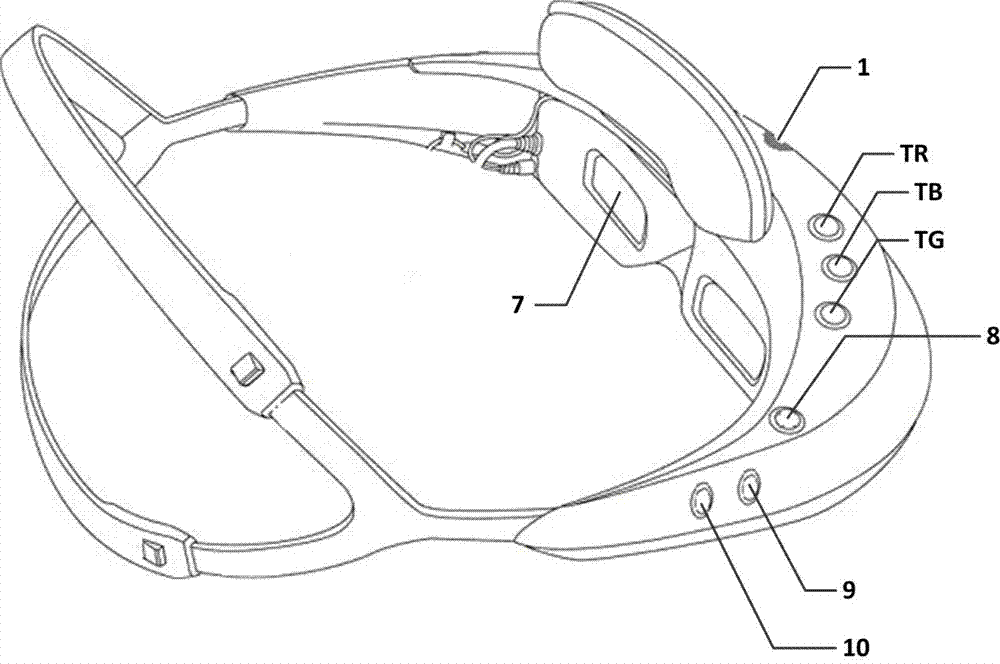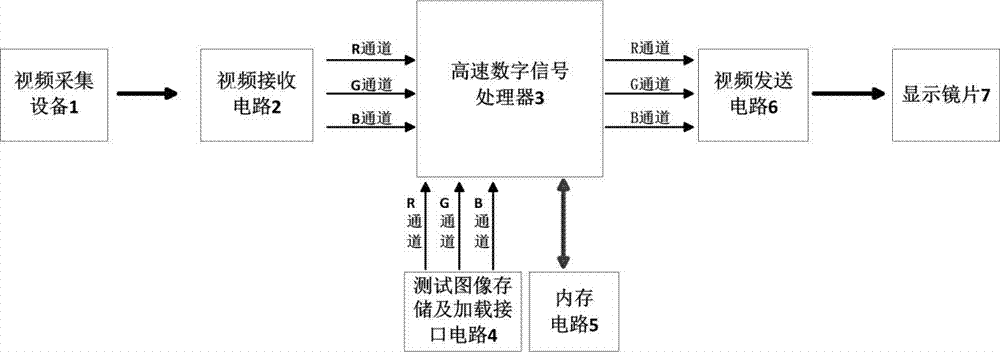Auxiliary color blindness color vision device
An auxiliary device and technology for color blindness, applied in color TV, color signal processing circuit, components of color TV, etc., can solve the problems of color blind glasses unable to achieve corrective effect, powerless optical correction, etc.
- Summary
- Abstract
- Description
- Claims
- Application Information
AI Technical Summary
Problems solved by technology
Method used
Image
Examples
Embodiment
[0041] As we all know, patients with color blindness and color weakness cannot drive motor vehicles due to their recognition barriers to traffic lights and some traffic signs. The invention can assist color-blind and achromatopic patients to recognize colors, so that they can also drive motor vehicles like people with normal color vision. For example, for color-blind and color-deficient patients who recognize red, first wear the present invention on the head, and connect the present invention to a PC through a USB data cable, start the present invention, and transmit the standard color-blindness detection map to the present invention through the PC, and transmit After finishing, disconnect the PC machine and the connection of the present invention; Then, select the test image storage and loading interface circuit as the video data source input high-speed digital signal processor by the video selection button, display the standard color-blindness detection figure on the disp...
PUM
 Login to View More
Login to View More Abstract
Description
Claims
Application Information
 Login to View More
Login to View More - R&D
- Intellectual Property
- Life Sciences
- Materials
- Tech Scout
- Unparalleled Data Quality
- Higher Quality Content
- 60% Fewer Hallucinations
Browse by: Latest US Patents, China's latest patents, Technical Efficacy Thesaurus, Application Domain, Technology Topic, Popular Technical Reports.
© 2025 PatSnap. All rights reserved.Legal|Privacy policy|Modern Slavery Act Transparency Statement|Sitemap|About US| Contact US: help@patsnap.com



